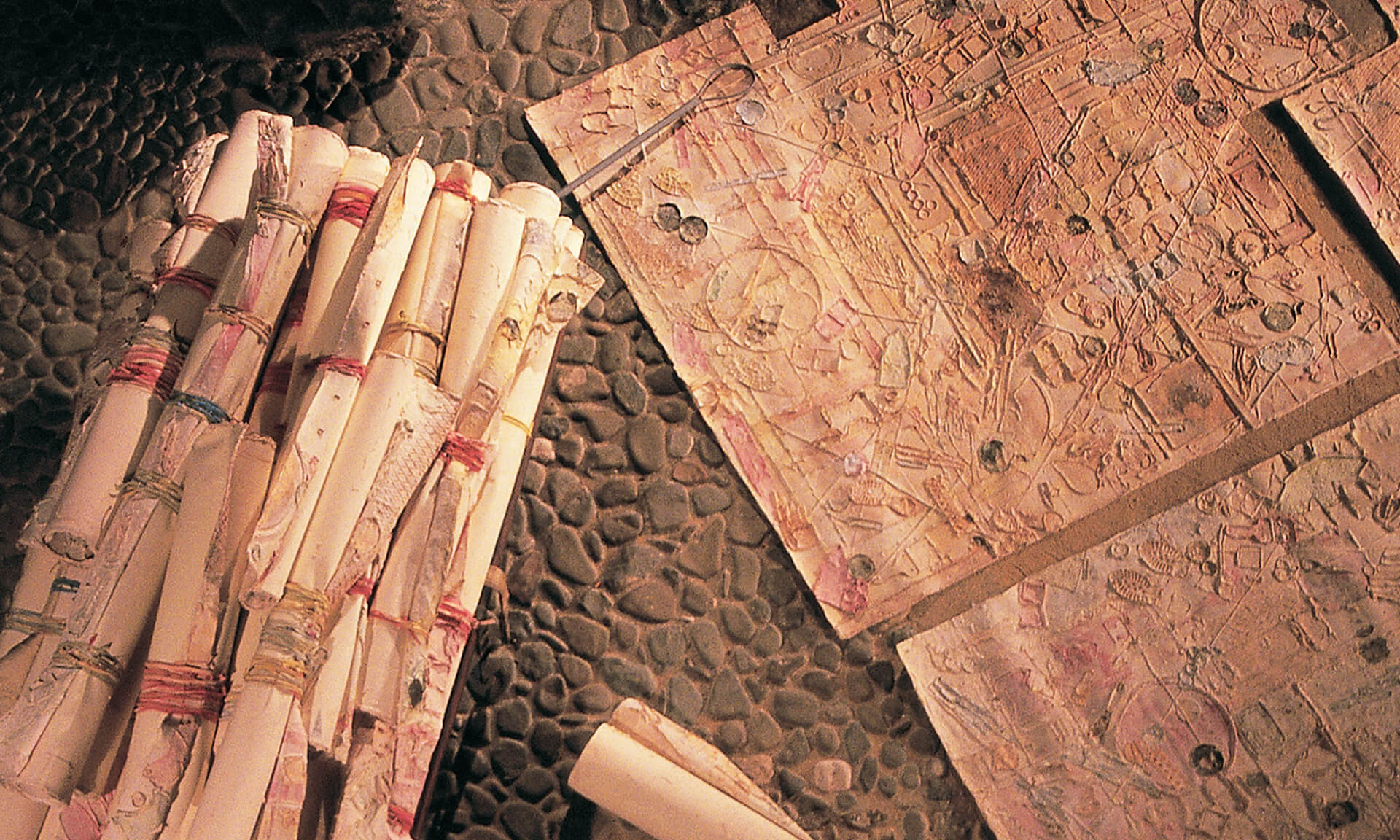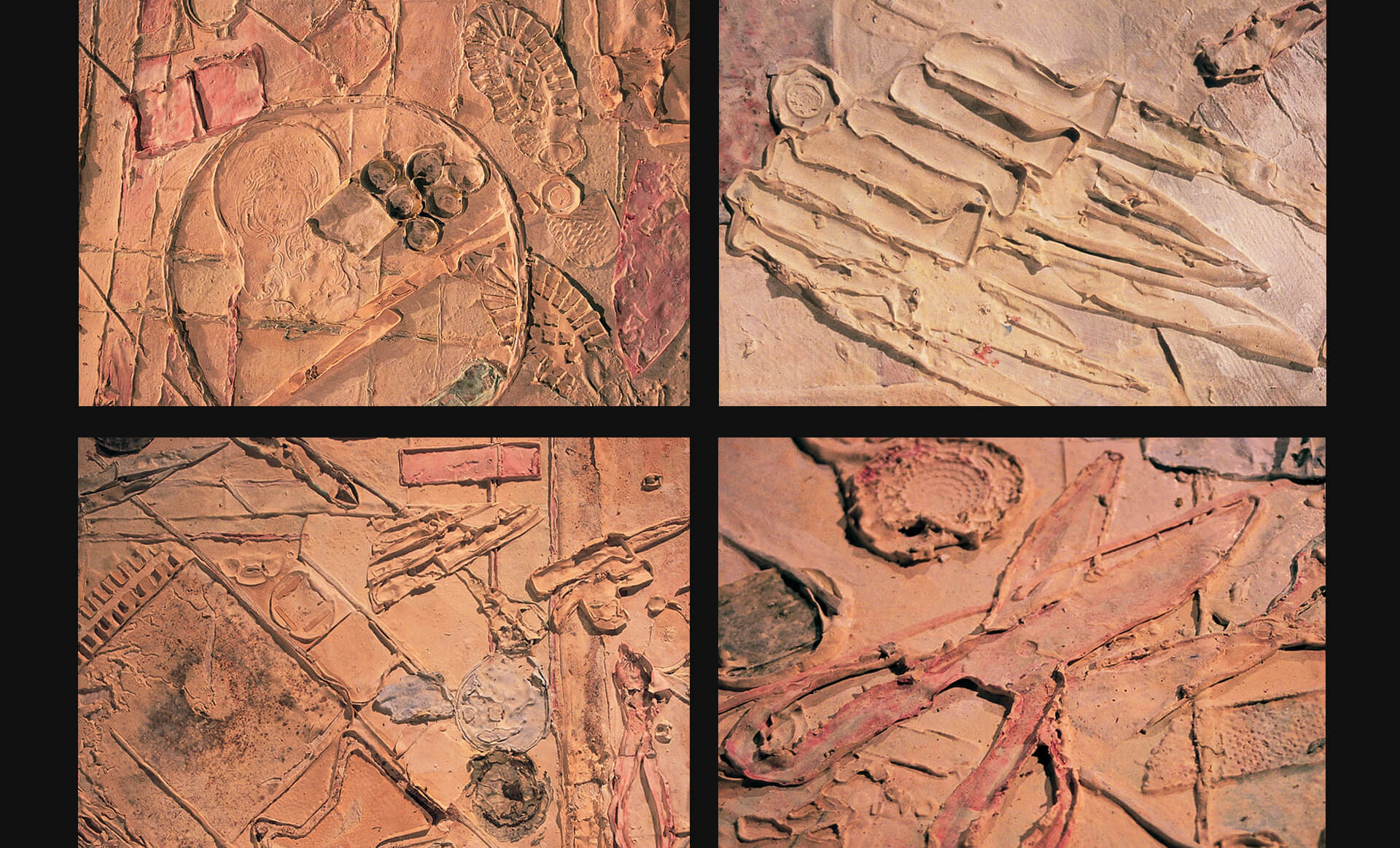Tracing Homeness
Metal cart, latex
Open Exhibition of Sculptures and Installations
Lido, Venice
Dimensions Variable
2002
Pulling them along, in search of new prospective grounds; thus arrive the carts of Klitsa Antoniou. Some things cannot be left behind; some things are always there with you, counting on you. They are counting on the scars left behind in your selective memory. Relating to things that happened and to moments that are still relevant, these works constitute permanent blueprints. Blueprints of what? No answers - just the margins and contours of things - leftovers from a once three-dimensional reality, flattened by the eye that doesn’t want to look over the shoulder. Yet it looks, and sees it all. There, on the ground, spreading from left to the right, from here to anywhere, lie the incongruous objects refusing to be swept away. Just like that, because the walls, the ceiling and the dirty floors have thrown you out on the streets, naked, without a shell that you can call a home; now it is up to you, which things to take and what to leave behind.
Speaking about THINGS brings up functional memories like sawing, cutting, mending, leaving aside the affective sway they hold over us. Forced to go, forced to pack everything or to become inanimate as they are, then and only then their entire emotional weight pulls on you, tearing you apart. And in the end, you are left with this pile rising in front of your own instinctual drive to run away and save your skin. When you leave, deciding on the things you can take, the whole pile becomes a second skin, folded neatly into carpet-like parchments.
Even if one has found another space that could be invested with life, the sense of belonging remains elsewhere: inscribed on the surface - like some indelible scar. All those cylindrical rolls in the cart can still maintain a living link with so many lost objects: like phantom limbs of the present. One of the most troubling after-effects of an arm or leg amputation is the phantom limb syndrome, in which the person reports receiving sensations from the lost limb. We know now, that this is caused by the brain’s attempt to reorganise itself after some serious disruption in the sensory information output. The information is received from the rest of the body, but it somehow gets scrambled. In the process of moving away and of moving towards something new, strange connections bring forth. All the marks left by the incredible density of mundane happenings are accurately charted in Klitsa Antoniou’s work. Here on cortical surfaces, feelings migrate from one site to another, stabilising only for a brief moment before they swap places once again.
Feel the rash that covers the peeled ground. Scratch with attentive eyes and take a glimpse on the marks saturating Klitsa Antoniou’s palimpsest. Ridges form panels, panels form sides caught in the act of leaning towards the pointed blades of knives. ( Phantom limbs in a cart: the tracings of Klitsa Antoniou, Stefan Tiron, Berlin based Independent Curator Berlin, 2002)



